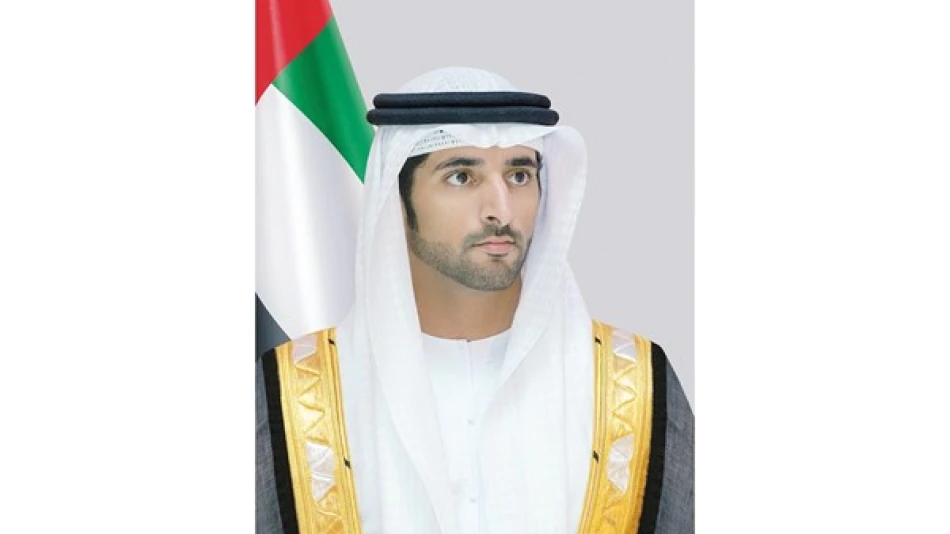
Dubai Solidifies Its Prominence on the Global Tourism Map under Hamdan bin Mohammed's Leadership
Dubai's Tourism Boom Defies Global Economic Headwinds with 9.88 Million Visitors
Dubai has emerged as a standout performer in the global tourism recovery, welcoming 9.88 million international visitors in the first half of 2025—a 6% increase from the same period in 2024. This growth comes despite persistent global economic uncertainties, inflation pressures, and shifting travel behaviors that have challenged destinations worldwide, positioning Dubai as a resilient tourism powerhouse in an increasingly competitive market.
Strategic Vision Drives Unprecedented Growth
The emirate's tourism success reflects the ambitious targets set under Dubai's Economic Agenda "D33," which aims to double the size of Dubai's economy and establish it among the world's top three economic cities by 2033. Crown Prince Sheikh Hamdan bin Mohammed bin Rashid Al Maktoum emphasized that these results demonstrate Dubai's commitment to maintaining global leadership across all sectors, driven by continuous innovation and infrastructure development.
This performance is particularly impressive when viewed against the backdrop of global tourism challenges. While many destinations struggle with post-pandemic recovery, Dubai has not only bounced back but accelerated its growth trajectory through strategic investments in unique experiences and world-class infrastructure.
Regional Dominance with Global Appeal
Market Distribution Reveals Strategic Positioning
Western Europe leads Dubai's visitor segments with 2.12 million tourists (22% of total arrivals), followed by GCC countries at 1.51 million visitors (15%) and neighboring Middle East and North Africa markets contributing 1.12 million visitors (11%). This distribution highlights Dubai's success in balancing regional accessibility with international appeal.
The strong GCC performance is particularly significant, as regional tourism often provides more resilient revenue streams during global economic volatility. Dubai's ability to maintain its position as the region's premier destination while expanding its European market share demonstrates sophisticated destination management.
Hotel Industry Metrics Signal Robust Demand
Premium Pricing Power Reflects Market Strength
Dubai's hospitality sector has achieved remarkable performance across all key metrics. Hotel occupancy rates reached 80.6% in the first half of 2025, up from 78.7% in the same period of 2024. More tellingly, the average daily room rate increased by 5% to AED 584, while revenue per available room jumped 7% from AED 439 to AED 471.
This pricing power indicates genuine demand strength rather than volume-driven growth. The 4% increase in room bookings to 22.24 million, combined with higher rates, suggests Dubai has successfully positioned itself in the premium tourism segment—a strategy that typically provides better margins and economic resilience.
Infrastructure Expansion Supports Future Growth
Dubai's hotel inventory reached 152,483 rooms across 822 establishments by June 2025, reflecting continued confidence in long-term tourism prospects. This expansion comes at a time when many global destinations are cautious about new capacity, suggesting Dubai's leadership believes current growth trends are sustainable.
Economic Implications and Global Context
Dubai's tourism success carries broader economic significance beyond visitor numbers. The sector's performance supports the emirate's diversification strategy away from oil dependence, while strengthening its position as a global business and financial hub. The average visitor stay of 3.71 nights indicates healthy spending patterns and engagement with Dubai's diverse offerings.
Compared to other major tourism destinations, Dubai's 6% growth rate stands out in a global environment where many cities are still recovering to pre-pandemic levels. This performance positions Dubai advantageously as international travel patterns normalize and competition for high-value tourists intensifies.
Strategic Outlook: Building on Momentum
The public-private partnership model that Dubai has cultivated appears to be delivering measurable results. The collaboration between government entities and private sector operators has created an ecosystem that can adapt quickly to changing market conditions while maintaining service standards that justify premium pricing.
Looking ahead, Dubai's challenge will be maintaining this growth trajectory while managing capacity constraints and ensuring the visitor experience quality that commands premium rates. The emirate's focus on unique experiences and world-class infrastructure suggests a sustainable approach to tourism development that prioritizes value over volume—a strategy that could prove prescient as global tourism markets mature.
Most Viewed News

 Layla Al Mansoori
Layla Al Mansoori






